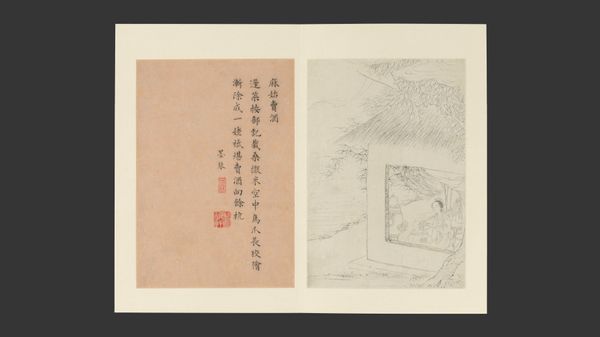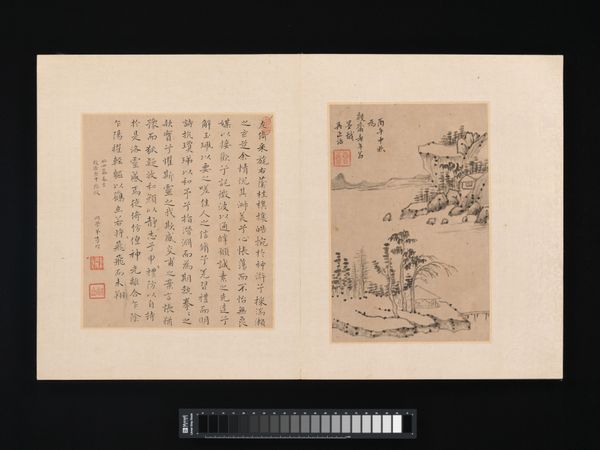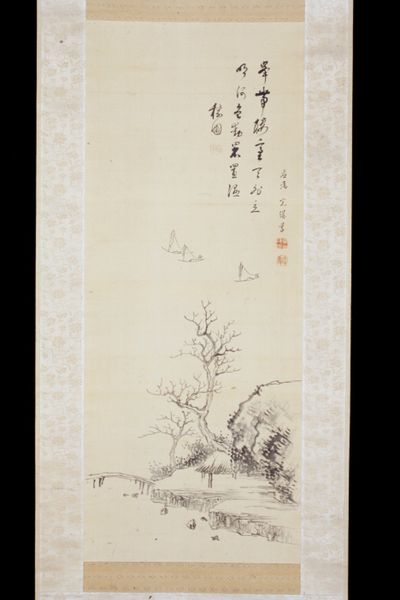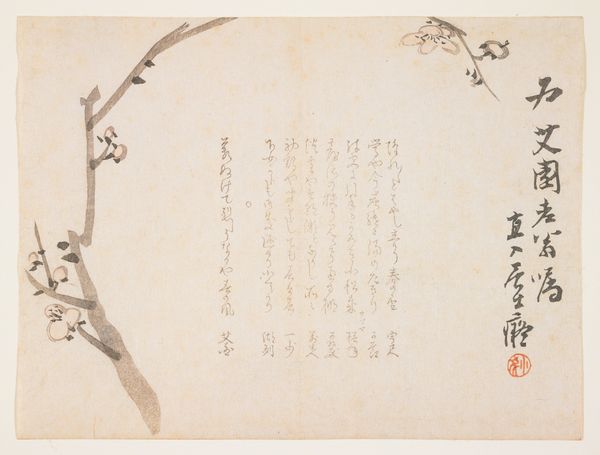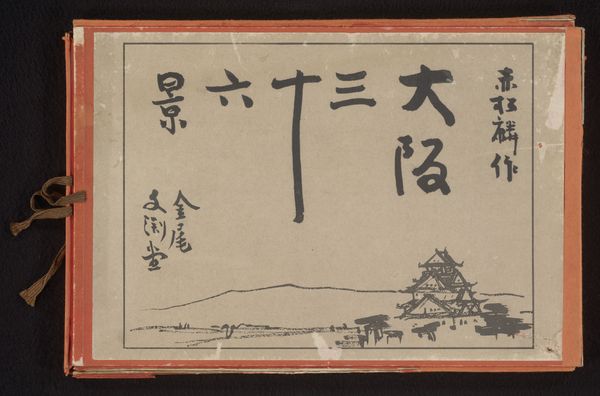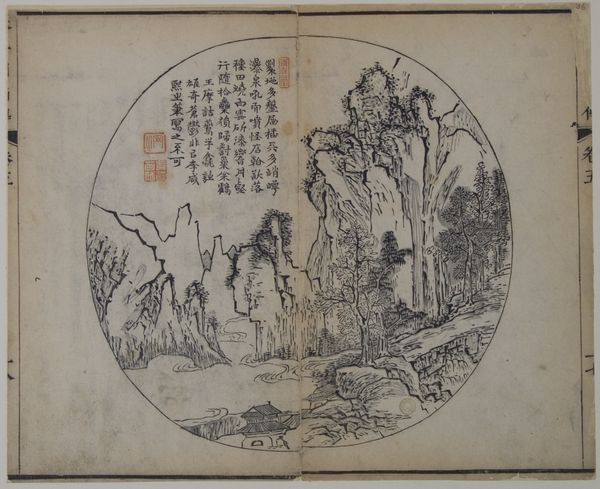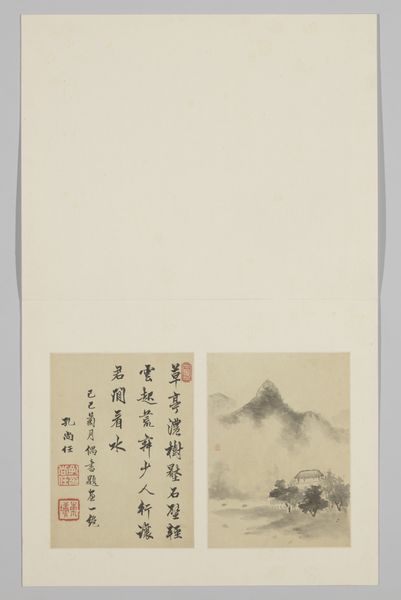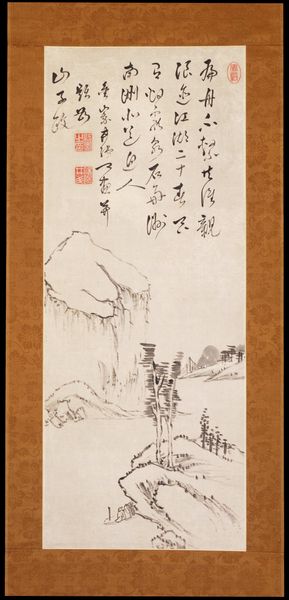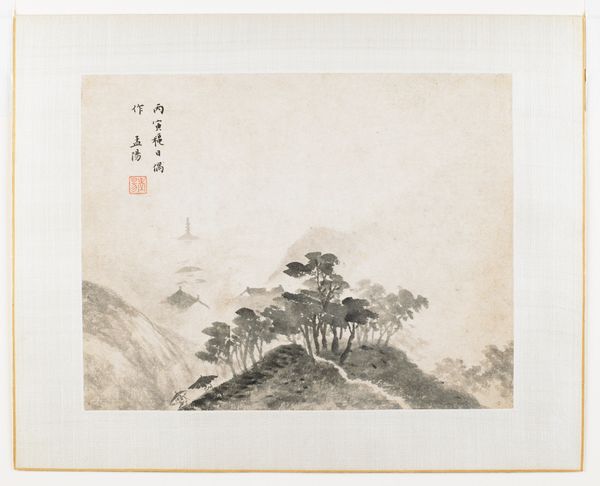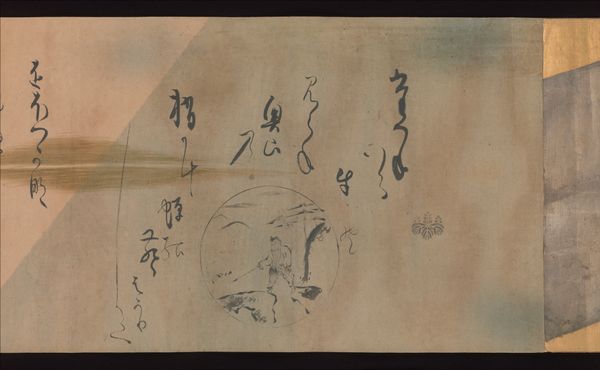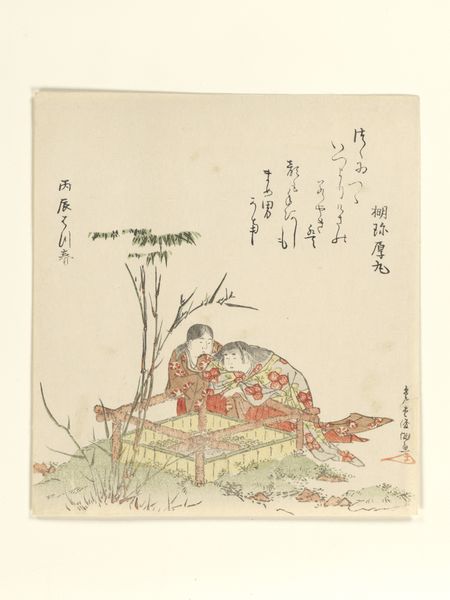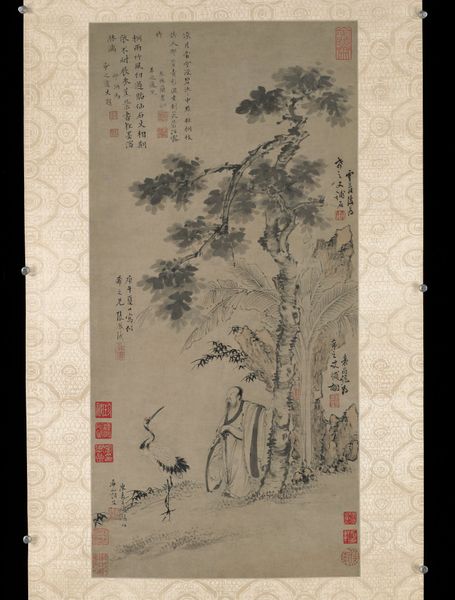
drawing, paper, ink
#
drawing
#
asian-art
#
landscape
#
ukiyo-e
#
figuration
#
paper
#
ink
#
line
Dimensions: Album: 11 7/16 × 12 3/8 × 3 13/16 in. (29 × 31.4 × 9.7 cm)
Copyright: Public Domain
Curator: Let's discuss a page from Watanabe Kazan's "Album of Fifty-four Sketches," a 19th-century work held at the Metropolitan Museum of Art. What strikes you initially about it? Editor: The sheer immediacy of it. The ink line work on paper has a quality that feels almost casual, as if it was capturing a fleeting impression. There’s an economy of line, a deliberate choice to render form with very few strokes. How was Kazan able to produce art so seemingly off-the-cuff? Curator: Kazan was an interesting figure; both a samurai and a scholar, heavily involved in socio-political discourse, his art became entangled in these tensions. His status allowed him freedom to explore artistic techniques, which he embraced wholeheartedly. You see in these sketches the integration of Western perspective techniques into traditional Ukiyo-e aesthetics, evidence of cross-cultural influences in Japan during this period. Editor: So this fluidity speaks to a material exchange, an openness to re-interpret existing tools for mark making? The roughness too—I wouldn’t immediately peg this as high art, rather I sense craft here. The lines delineate landscape and figures, the mask evokes folklore. It makes me wonder, who were these images for, were these studies, a method of knowledge making? Curator: Good question. These sketches reveal much about Kazan's world and interests. Kazan belonged to a circle of intellectual elites; these sketches likely served educational purposes and allowed access into scholarly exchange around depictions of nature and folklore as symbolic representations of the world. It demonstrates Kazan's participation in intellectual circles but also speaks to art's accessibility in a society that held both rigid social and scholastic systems. Editor: What do you mean about participation? Did the act of sketching operate differently for Kazan versus those in lower ranks? Curator: Absolutely. The very act of producing such works could signify both a resistance to or reinforcement of established artistic conventions depending on his context. A noble’s craft holds different cultural meanings and connotations from the works of tradespeople, even if they visually appear to be pursuing the same goals. The drawings underscore that the circulation of images, like other material goods, depended on who had access and under what terms. Editor: Fascinating how the material quality of the album invites us into deeper exploration of the historical context of its making. Curator: Exactly. Analyzing this sketch within the "Album" provides unique insight to Japan’s dynamic social and intellectual atmosphere of the 19th century, inviting discussions of its social structures through material art objects.
Comments
No comments
Be the first to comment and join the conversation on the ultimate creative platform.
